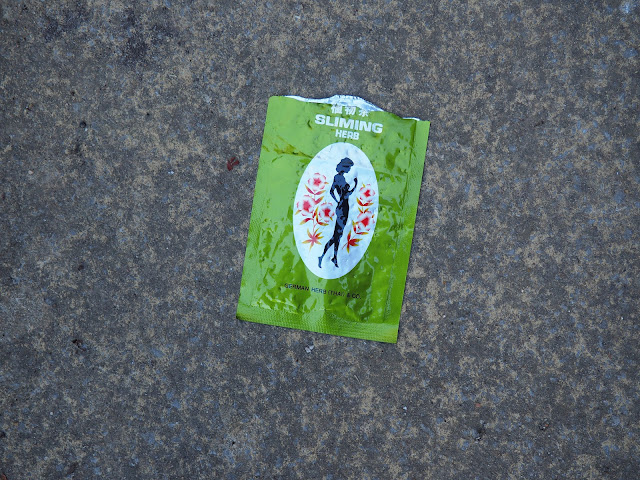
I was dipping in to Genpei Akasegawa’s Hyperart: Thomasson, as I do from time to time, and I came across this picture:
For those who’ve missed it previously, a Thomasson is an architectural feature that remains in place even though it’s no longer functional: bridges and staircases to nowhere, third floor doors that open into space, and so on. The name is Akasegawa’s invention.
That picture was actually taken by Yomota Inuhiko, back in the day, in the Rue De Cardinal Lenoine, in Paris. Yomota Inuhiko writes, ‘At first glance, it looked as though huge band-aids or strips of scotch tape that had been affixed to the building had, over the years, become rotten and faded leaving behind only a scar.’
In fact I’m not sure that the photograph really shows a Thomasson. I think it’s just a badly repaired bit of masonry, but it made me realize that in my own wanderings I’ve developed quite a taste for looking at and photographing badly, or eccentrically, repaired walls and brickwork, if not strictly speaking masonry.
Further research (although ‘research’ sounds a rather grand term for it) revealed an article by Terunobu Fujimori titled by ‘Under the Banner of Street Observation.’ Tom Daniell seems to be the man who made it, and much more information on this subject, available to we gaijin.
The article is partly about the Street Observation Society, formed in 1986 by the author of the article - Terunobu Fujimori, an architectural historian - and Genpei Akasegawa (op cit) who is probably best thought of as a multimedia artist.
Alone, together and with others, the pair wandered the streets of Japan, looking, photographing, making drawings, giving names to things. But above all looking, and if that meant looking at things in a new or different way then so much the better. The Japanese name for the activity was, and I suppose still is, Rojo Kansatsu -- Street Observation.
I find this just wonderful both as a practice and as an idea. And yes of course it involves many of the same activities as psychogeography, but I find this Japanese version so much more appealing because it involves going out walking and looking at whatever’s there, not making any claims for "the study of the precise laws and specific effects of the geographical environment, consciously organized or not, on the emotions and behavior of individuals,” a la Guy Debord.
Among many wonders in the article, some of them quite inscrutable, there is this photograph captioned ‘Genpei Akasegawa photographing a tsuboniwa (spot garden) in a manhole cover, in 1986. From Kyoto Omoshiro Watching (Tokyo: Shinchosha, 1988).
That would be fine in itself but it also brings in Joji Hayashi (about whom I can find very little), described in the Terunobu Fujimori article as ‘a bizarre individual who finds everything worthy of close attention and orderly documentation; he glues train ticket chads into albums, places pebbles that lodge in his shoes into small bottles, all carefully dated, and has famously taken thousands of photographs of manhole covers.’ There’s a book:
There’s something Zen about this I think, though my understanding of Zen is patchy. And I realized that I too have photographed a certain number of manholes and even coalholes in the course of my ‘street observation’ though the ones I’ve photographed aren’t nearly as cool as the Japanese ones.

If the Internet has proved anything it’s that there you’re never alone in your obsessions. However arcane your interests may seem, there’s probably already a website, a chatroom, a Facebook page, for people who share your interest, and in this particular case there’s now an activity called Drainspotting.
But the notion of street observation raises the issue of whether you go walking and look for specific things – manhole covers, Thomassons, brick work repairs or whatever, or whether you try to walk and be open to whatever turns up, whatever happens to be there.
I haven’t solved this problem. I don’t see how you can be equally open to all stimuli. That would be like some intense but amorphous acid trip. Human consciousness is nothing if not selective. And a lot of the time I don’t even think it’s a problem.
And then, out of the swamp of the Internet this appeared. I'm not so sure about that, Stanley:







































